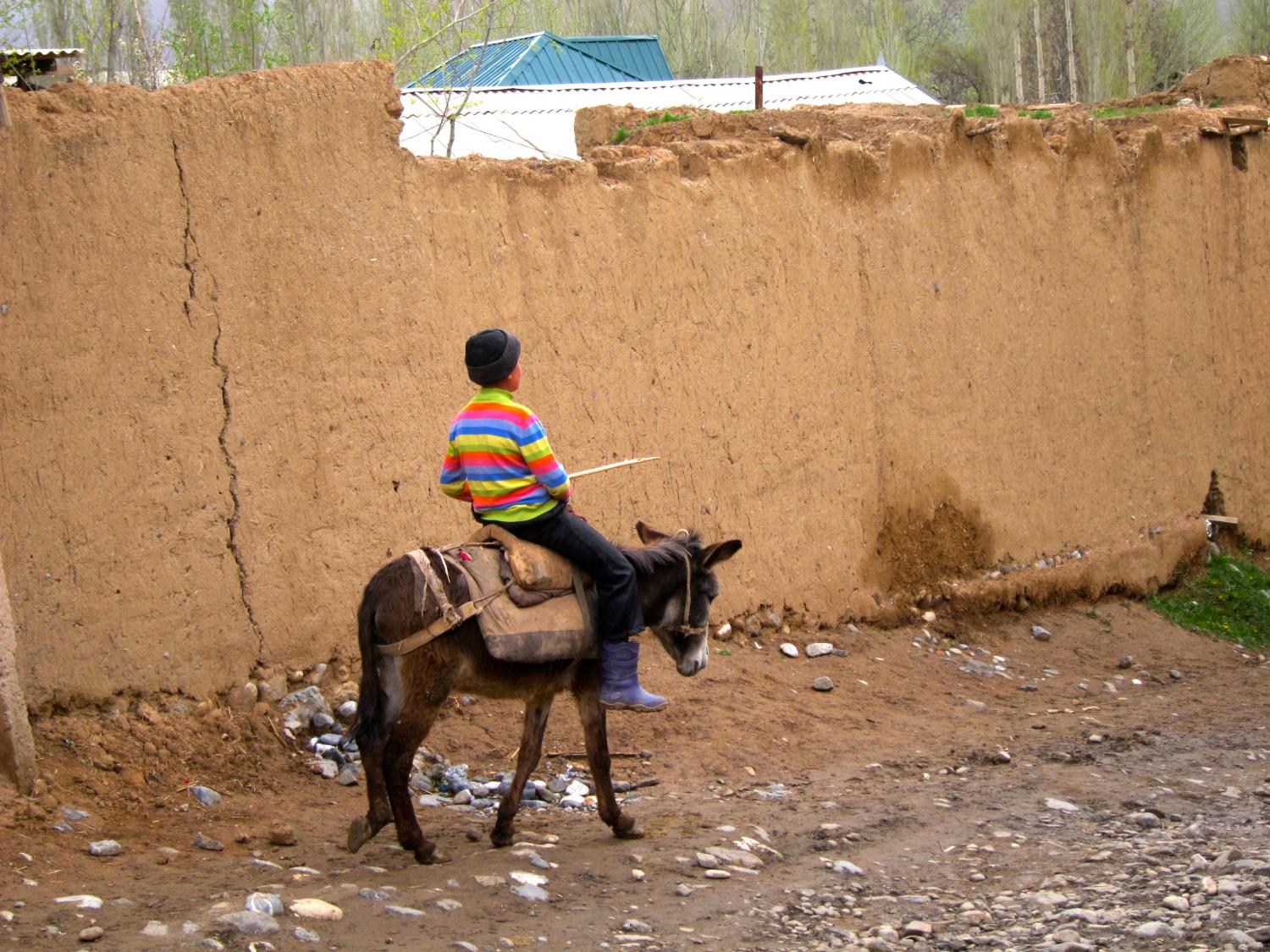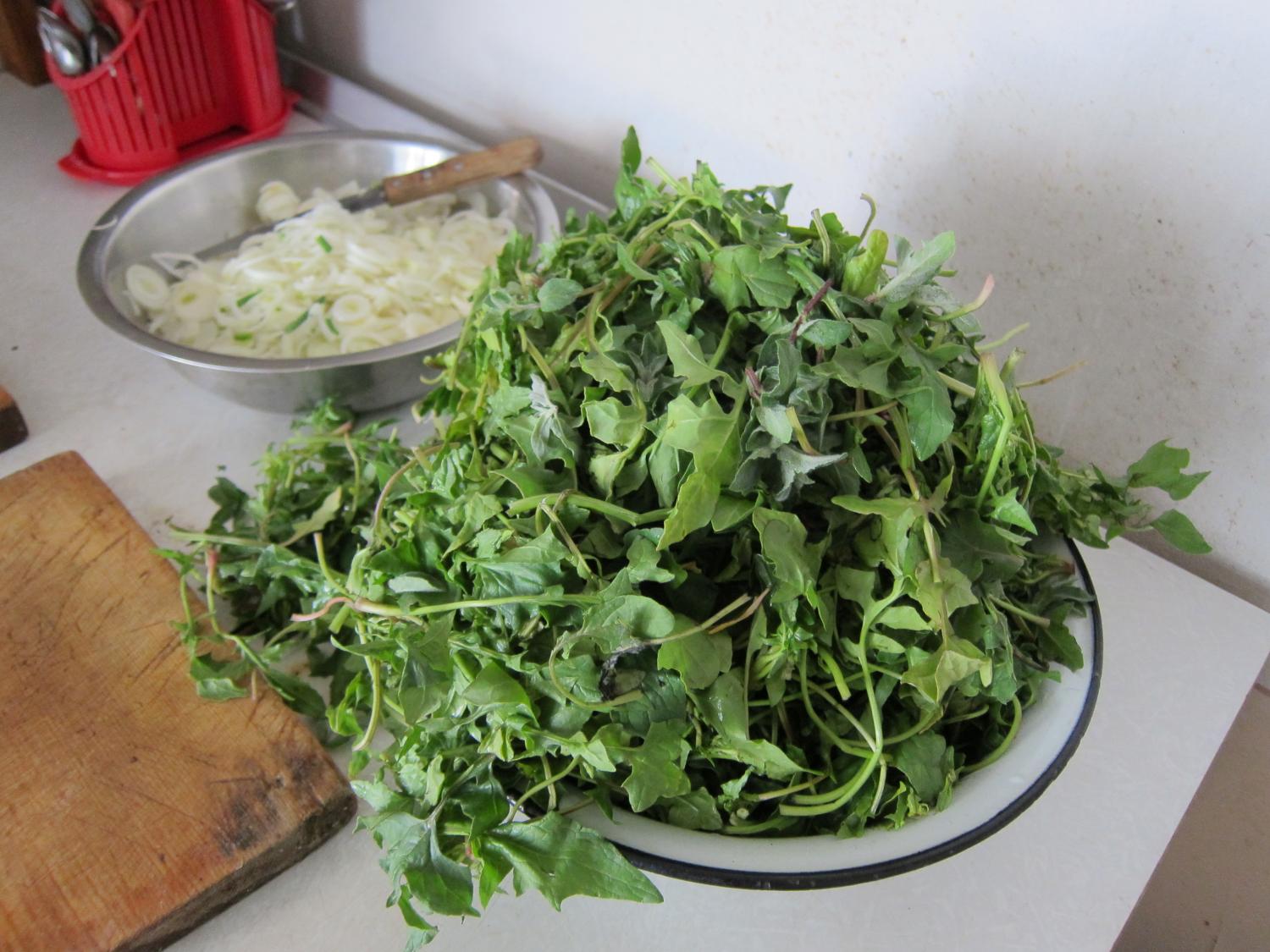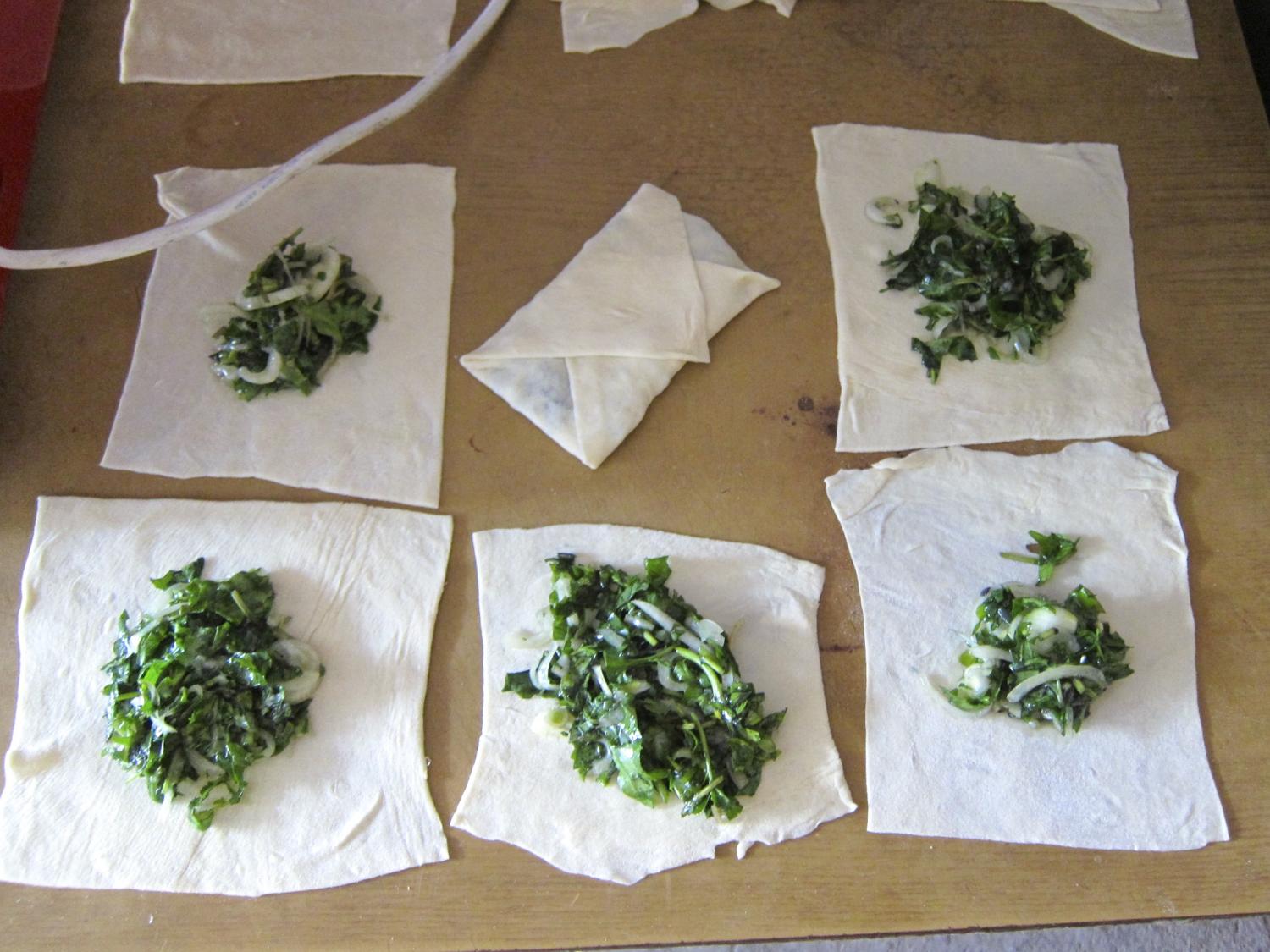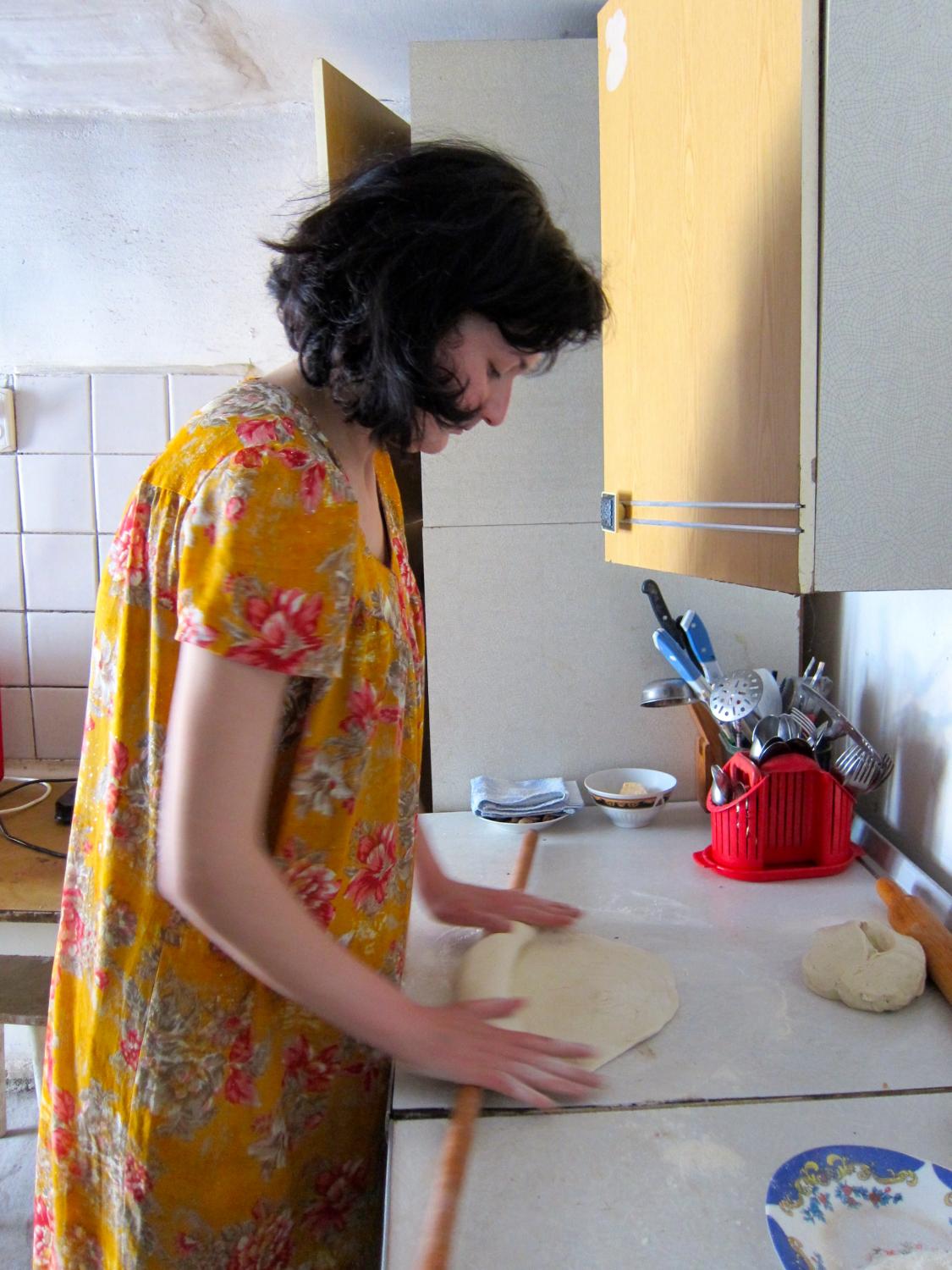Tajikistan: Kiva Cooks Vegetarian Samosas
May 1, 2013
Ask most people where the samosa originated and they will probably mention India. But in fact, these little pastry treats took off in Central Asia and spread to India via the Silk Road. Now samosas can be found in various incarnations, everywhere from Afghanistan to Egypt. In Afghanistan, the savory meat parcel is sprinkled with pistachio and sugar. They’re eaten with pounded dates, chili and shredded ginger in Zanzibar. In Tajikistan, they are filled with wild greens, pumpkin, or lamb, depending on the season. And in Somalia, they were even banned by al-Shabab during the 2011 East Africa Drought -- for being 'too Christian'.
But I am back where it all began, on the Silk Road in Central Asia...
 On the Silk Road in Penjikent town
On the Silk Road in Penjikent townI have just spent the past month in northern Tajikistan, once a central trading point on the Silk Road. It's a city rich in history, founded by Alexander the Great in 329BC as Alexandria Eschate - Alexandria The Furthest. The Soviets renamed the city Leninabad from 1939 to 1991. Little historic charm remains -- unless crumbling Soviet architecture is your thing -- but culinary traditions have remained very much intact.
Last week I was lucky enough to get a samosa cooking lesson from a colleague at Kiva Field Partner, IMON International. These samosas are quite different from those I've tried elsewhere. They are not dense, spicy, fried triangles stuffed with potato. They are a dainty, savoury pastry, filled with fresh wild greens, and sprinkled with nigella seeds. They're the tastiest samosas I've tried and easy enough to replicate at home, wherever you are in the world.
SILK ROAD SAMOSAS
Filling
1 HUGE bowl of wild greens (rocket, baby spinach, sorrel, coriander, dill - whatever you can find!)
2 brown onions, thinly sliced
1 cup oil (sunflower or olive oil)
1/2 teaspoon salt
Pastry
Well, I'll let you off the hook and suggest picking up pre-made pastry dough (sometimes called Patti or Manda) from an Indian or Asian grocery store. You could also use filo pastry. Making pastry from scratch is quite labout intensive -- just to give you an idea, you'll need a foot-long rolling pin -- and you will need to prepare it the day before as it must rest overnight. But if you are truly that determined...
2 1/4 cups flour
1/2 cup sunflower oil
1/3 cup cold water
1 egg
pinch of salt
extra flour, for working the dough
Topping
1 egg yolk
1 teaspoon nigella seeds
 Freshly picked wild greens
Freshly picked wild greensShort Version
1. Preheat oven to 390ºF (200ºc)
2. Slowly heat oil in a saucepan until warm - do not let it get too hot!
2. Roughly chop greens and combine with sliced onions
3. Pour warm oil over the greens, add a pinch of salt, then mix vigourously using your hands
 Tossing greens and onions, after adding warm oil
Tossing greens and onions, after adding warm oil4. Lay out pastry squares and place a large spoonful of greens in the middle
5. Spread the greens diagonally across the pastry, then fold each triangle toward the center
 Fold the pastry corners towards the centrer, enveloping the greens
Fold the pastry corners towards the centrer, enveloping the greens6. Flip the parcel over and place on a lined baking tray
7. Brush with egg yolk, sprinkle with a few nigella seeds and bake for 10 - 15 minutes, until puffy, golden and crisp!
Extended Version
The night before --
1. Sift flour and salt into a large bowl
2. In a separate bowl, beat the egg and add the sunflower oil and water
3. Create a well in the middle of the dry ingredients and add 1/4 of the oil mixture
4. Using your finger tips, mix the ingredients - add 1/4 of oil at a time, working the dough until it has a smooth consistency
5. The dough should should be malleable enough to form a firm ball of dough - if it is too sticky, add a little more flour to the mixture
6. Place the dough in a bowl and cover with a damp tea towel to leave overnight
The following day --
7. Start by covering your work surface with a light layer of flour and place the dough on top
8. Flatten the dough using your hands -- you may have to bash the dough with your knuckles -- until it resembles a rectangle (about the size of an A4 page), 1-2 cm thick
9. Fold the dough in half, then fold it in half again
10. Repeat step 8, pounding the dough with your knuckles, then get out your 1 foot long rolling pin!
 Umeda from IMON International working dough like a pro
Umeda from IMON International working dough like a pro11. Roll, roll, roll, until the pastry is as thin as paper (easy, right?)
12. Fold and layer the large sheet of pastry to create 4 or 5 layers, like this...
 Layer and slice the pastry
Layer and slice the pastry13. Using a sharp knife, slice the pastry vertically, creating long strips
14. Stretch out the pastry strips to make them as thin as possible before cutting it into squares
 Stretch out the pastry before cutting it into squares
Stretch out the pastry before cutting it into squares15. Start back at step 1 of the short version
If you managed to get through the extended version, I am thoroughly impressed and would love to see a picture of your finished goods!
Davinia Cogan is a member of Kiva Fellows Class KF20. She is working with Kiva Field Partners MLO Humo, Arvand and IMON International in Tajikistan. Over the past few years she has hopped around the globe, living in Sydney, Paris, Kampala and London. After four years of working in Investment Management in Australia, Davinia decided to put her finance skills to better use and moved to Uganda to start a social enterprise and farmer training program. She is particularly passionate about specialty coffee and worked closely with USAID in Rwanda to assess the economic impact of access to microfinance and training in smallholder farmer groups. Davinia studied International Business and Finance as an undergraduate and completed an MA in International Studies at the University of Sydney. She also studied French language and culture at La Sorbonne, Paris and has travelled extensively throughout Asia, Africa, the Middle East, Europe and the USA. Davinia recently completed an Internship at the Social Stock Exchange in London.
PREVIOUS ARTICLE
Kiva Zip hits $1 million! →NEXT ARTICLE
This Mothers Day, show your mom how good you are! →













